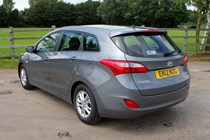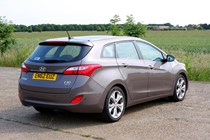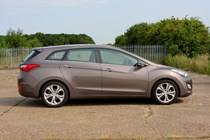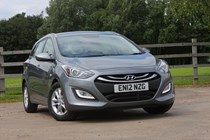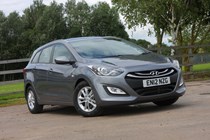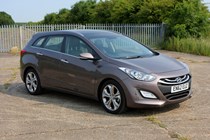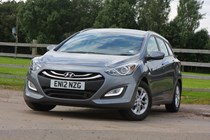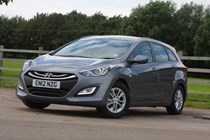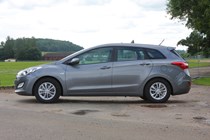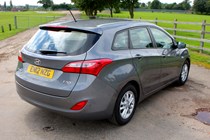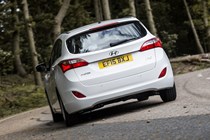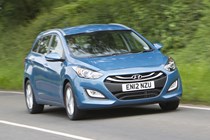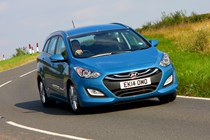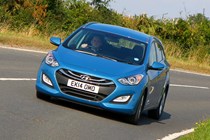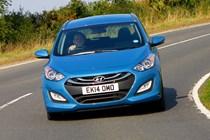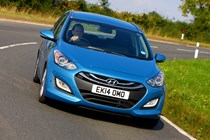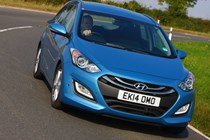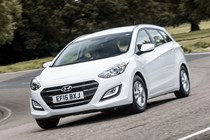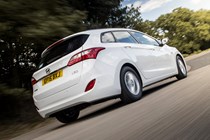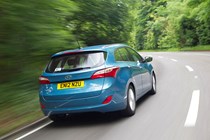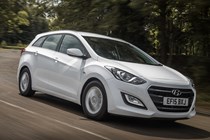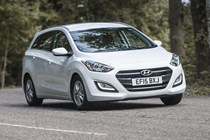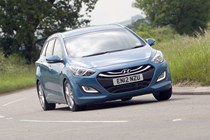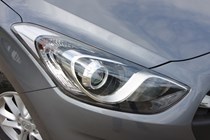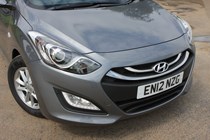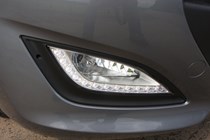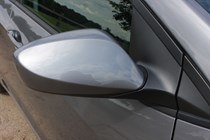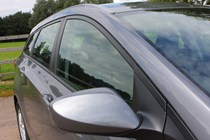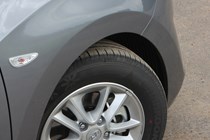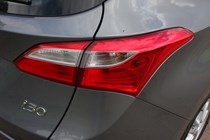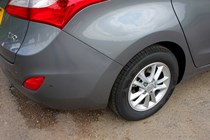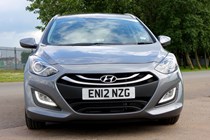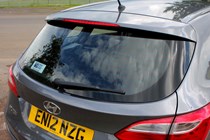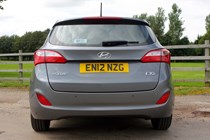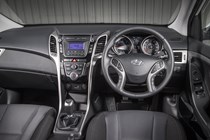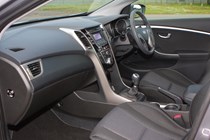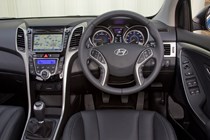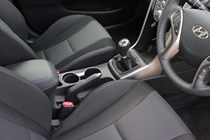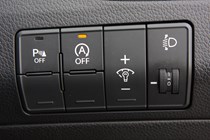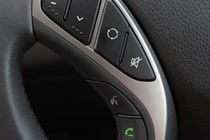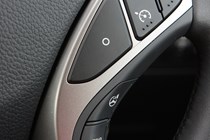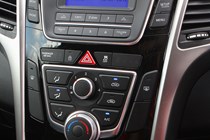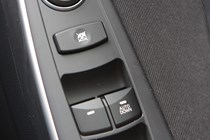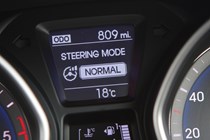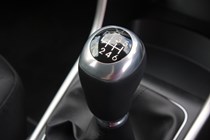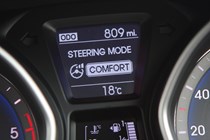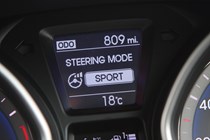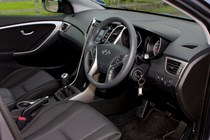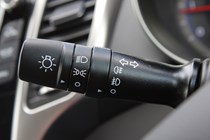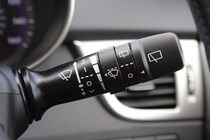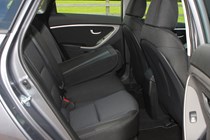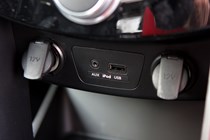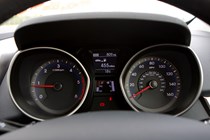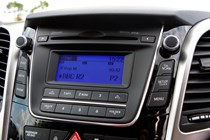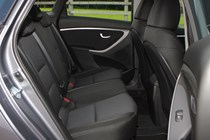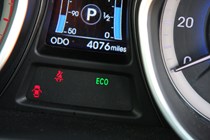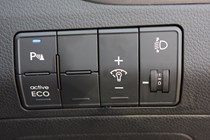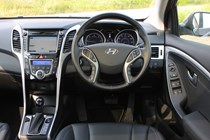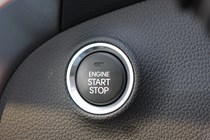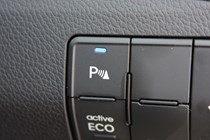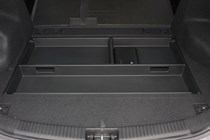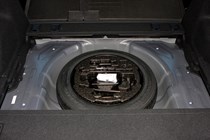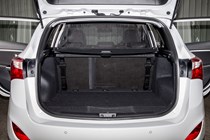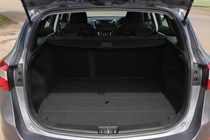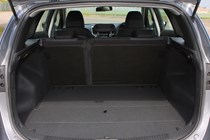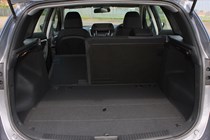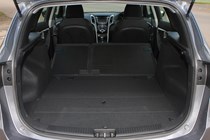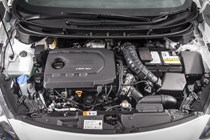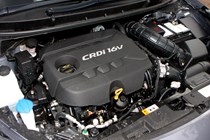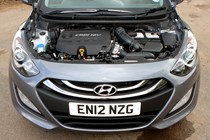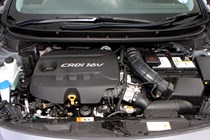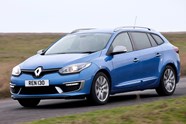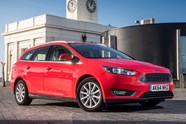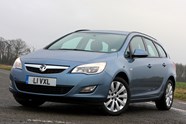
Hyundai i30 Tourer review
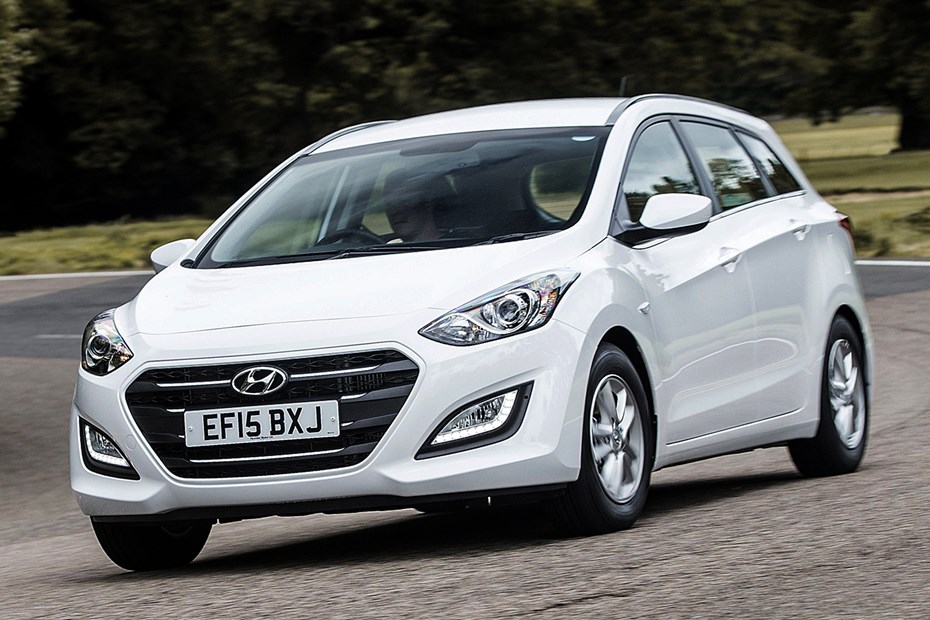
At a glance
| Price new | £16,760 - £25,295 |
|---|---|
| Used prices | £1,690 - £10,027 |
| Road tax cost | £20 - £255 |
| Insurance group | 9 - 13 |
Get an insurance quote with

|
|
| Fuel economy | Not tested to latest standards |
| Range | 466 - 839 miles |
| View full specs for a specific version | |
Available fuel types
Petrol
Diesel
Pros & cons
- Cheap running costs
- Seriously comfortable
- Lots of equipment
- Not very engaging
- Not the best looking car
Hyundai i30 Tourer (12-17) rivals
Overview
The Hyundai i30 Tourer was first unveiled at the 2012 Geneva Motor Show complete with up-to-the-minute styling, a cavernous boot and that very attractive five-year warranty. With all that to boast about, the Korean car maker is now setting its sights on company car staples like the Ford Focus, VW Golf and Vauxhall Astra. It’s fair to say that the estate version of new i30 has gro wn up.
Grown-up estate
Not only is it 185mm longer than the hatchback it’s 10mm longer than previous model. That means a big old boot. Load space – with the seats in place and up to the load cover – is 528 litres; a 140-litre increase over the hatchback’s. Again, those increased dimensions mean Hyundai can preen its feathers, at least for a little while. The Tourer’s boot is bigger than those of its key rivals including the Ford Focus Esate that offers 476 litres and the Vauxhall Astra Sport Tourer that has 500 litres of loadspace. And that’s not all: the i30 Tourer has a maximum load capacity of 1,642 litres which beats the 1,502-litre boot on the Focus and 1,550-litre offering in the Astra. In fact, the load space on the i30 Tourer is best in class.
Efficient range of engines
There are two engines and two gearboxes available. The logical choice for most drivers is the 1.6-litre diesel, which is available in two power outputs. The lower 109bhp version emits 110g/km of CO2, hitting 62mph in 11.8 seconds. The higher-powered version gets 126bhp, shaving 0.6 seconds off the 0-62mph time in exchange for a 5g/km CO2 emissions increase. A 1.6-litre petrol unit makes 118bhp, meaning it’ll hit 62mph in 11.2 seconds and return fuel economy of 42.8mpg on the combined cycle. The gearbox choices are box six-speeds, one manual and one automatic.
Sensible interior design
Inside, the i30 Tourer is a paragon of sensible design. Unlike the Focus, which is loaded with switches and buttons, the Hyundai is neat and tidy and easy to understand within seconds of getting in to the car. In the driver’s seat it’s comfortable and the wraparound rear windscreen allows plenty of light into the cabin. The Tourer is around £1,000 more expensive than the hatchback and CO2 emissions and fuel consumption will be higher because of the extra weight of the estate bodywork. Buyers will also be pleased to know that Hyundai’s five-year unlimited mileage warranty also includes five years’ roadside assistance and five years of annual vehicle health checks.
The Hyundai i30 Tourer was first unveiled at the 2012 Geneva Motor Show complete with up-to-the-minute styling, a cavernous boot and that very attractive five-year warranty. With all that to boast about, the Korean car maker is now setting its sights on company car staples like the Ford Focus, VW Golf and Vauxhall Astra. It’s fair to say that the estate version of new i30 has gro wn up.
Grown-up estate
Not only is it 185mm longer than the hatchback it’s 10mm longer than previous model. That means a big old boot. Load space – with the seats in place and up to the load cover – is 528 litres; a 140-litre increase over the hatchback’s. Again, those increased dimensions mean Hyundai can preen its feathers, at least for a little while. The Tourer’s boot is bigger than those of its key rivals including the Ford Focus Esate that offers 476 litres and the Vauxhall Astra Sport Tourer that has 500 litres of loadspace. And that’s not all: the i30 Tourer has a maximum load capacity of 1,642 litres which beats the 1,502-litre boot on the Focus and 1,550-litre offering in the Astra. In fact, the load space on the i30 Tourer is best in class.
Efficient range of engines
There are two engines and two gearboxes available. The logical choice for most drivers is the 1.6-litre diesel, which is available in two power outputs. The lower 109bhp version emits 110g/km of CO2, hitting 62mph in 11.8 seconds. The higher-powered version gets 126bhp, shaving 0.6 seconds off the 0-62mph time in exchange for a 5g/km CO2 emissions increase. A 1.6-litre petrol unit makes 118bhp, meaning it’ll hit 62mph in 11.2 seconds and return fuel economy of 42.8mpg on the combined cycle. The gearbox choices are box six-speeds, one manual and one automatic.
Sensible interior desig
Inside, the i30 Tourer is a paragon of sensible design. Unlike the Focus, which is loaded with switches and buttons, the Hyundai is neat and tidy and easy to understand within seconds of getting in to the car. In the driver’s seat it’s comfortable and the wraparound rear windscreen allows plenty of light into the cabin. The Tourer is around £1,000 more expensive than the hatchback and CO2 emissions and fuel consumption will be higher because of the extra weight of the estate bodywork. Buyers will also be pleased to know that Hyundai’s five-year unlimited mileage warranty also includes five years’ roadside assistance and five years of annual vehicle health checks.
Facelift in 2015 brings new equipment and engines
Hyundai gave drivers more kit and efficient engine and gearbox combinations in 2015. The Classic model was overhauled and called the i30 S, which came with keyless entry, air conditioning and steering wheel remote control.
Read on for the full Hyundai i30 Tourer review.



